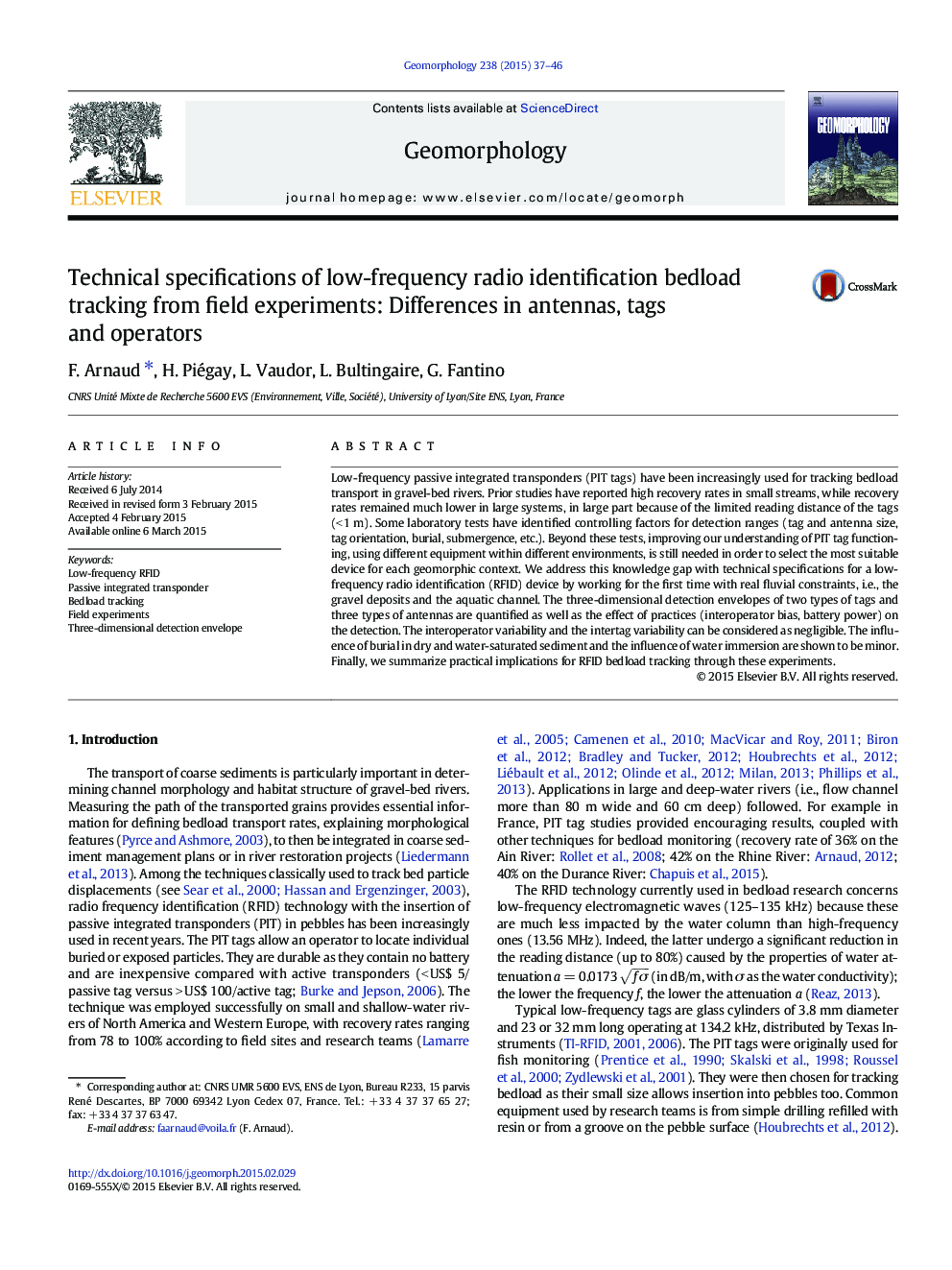| Article ID | Journal | Published Year | Pages | File Type |
|---|---|---|---|---|
| 4684298 | Geomorphology | 2015 | 10 Pages |
Abstract
Low-frequency passive integrated transponders (PIT tags) have been increasingly used for tracking bedload transport in gravel-bed rivers. Prior studies have reported high recovery rates in small streams, while recovery rates remained much lower in large systems, in large part because of the limited reading distance of the tags (<Â 1Â m). Some laboratory tests have identified controlling factors for detection ranges (tag and antenna size, tag orientation, burial, submergence, etc.). Beyond these tests, improving our understanding of PIT tag functioning, using different equipment within different environments, is still needed in order to select the most suitable device for each geomorphic context. We address this knowledge gap with technical specifications for a low-frequency radio identification (RFID) device by working for the first time with real fluvial constraints, i.e., the gravel deposits and the aquatic channel. The three-dimensional detection envelopes of two types of tags and three types of antennas are quantified as well as the effect of practices (interoperator bias, battery power) on the detection. The interoperator variability and the intertag variability can be considered as negligible. The influence of burial in dry and water-saturated sediment and the influence of water immersion are shown to be minor. Finally, we summarize practical implications for RFID bedload tracking through these experiments.
Related Topics
Physical Sciences and Engineering
Earth and Planetary Sciences
Earth-Surface Processes
Authors
F. Arnaud, H. Piégay, L. Vaudor, L. Bultingaire, G. Fantino,
